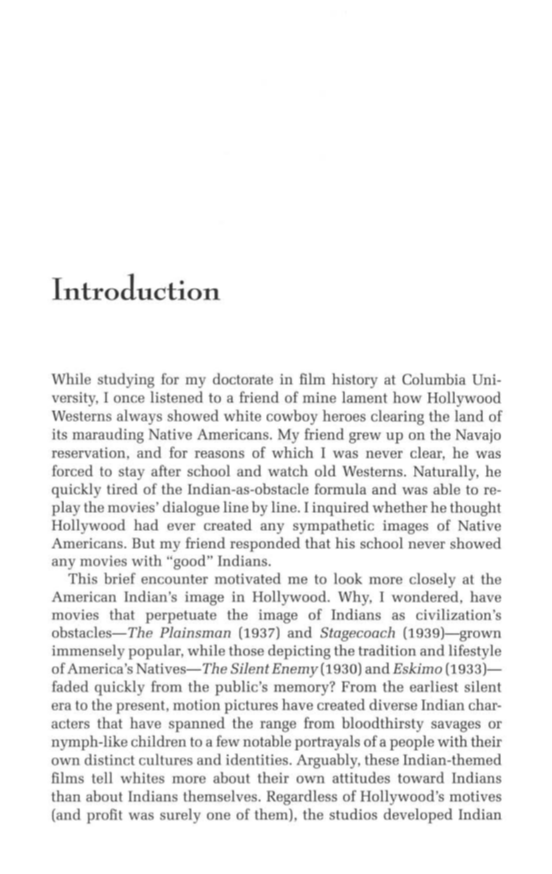Introduction While studying for my doctorate in film history at Columbia Uni- versity, I once listened to a friend of mine lament how Hollywood Westerns always showed white cowboy heroes clearing the land of its marauding Native Americans. My friend grew up on the Navajo reservation, and for reasons of which I was never clear, he wa forced to stay after school and watch old Westerns. Naturally, he quickly tired of the Indian-as-obstacle formula and was able to re- play the movies' dialogue line by line. I inquired whether he thought Hollywood had ever created any sympathetic images of Native Americans. But my friend responded that his school never showed any movies with "good" Indians. This brief encounter motivated me to look more closely at th American Indian's image in Hollywood. Why, I wondered, have movies that perpetuate the image of Indians as civilization's obstacles—The Plainsman (1937) and Stagecoach (1939)—grown immensely popular, while those depicting the tradition and lifestyle of America's Natives—The Silent Enemy (1930) andEskimo(1933)— faded quickly from the public's memory? From the earliest silent era to the present, motion pictures have created diverse Indian char- acters that have spanned the range from bloodthirsty savages or nymph-like children to a few notable portrayals of a people with their own distinct cultures and identities. Arguably, these Indian-themed films tell whites more about their own attitudes toward Indians than about Indians themselves. Regardless of Hollywood's motives (and profit was surely one of them), the studios developed Indian
Document Details My Account Print multiple pages
Print
You have printed 0 times in the last 24 hours.
Your print count will reset on at .
You may print 0 more time(s) before then.
You may print a maximum of 0 pages at a time.









































































































































































































































